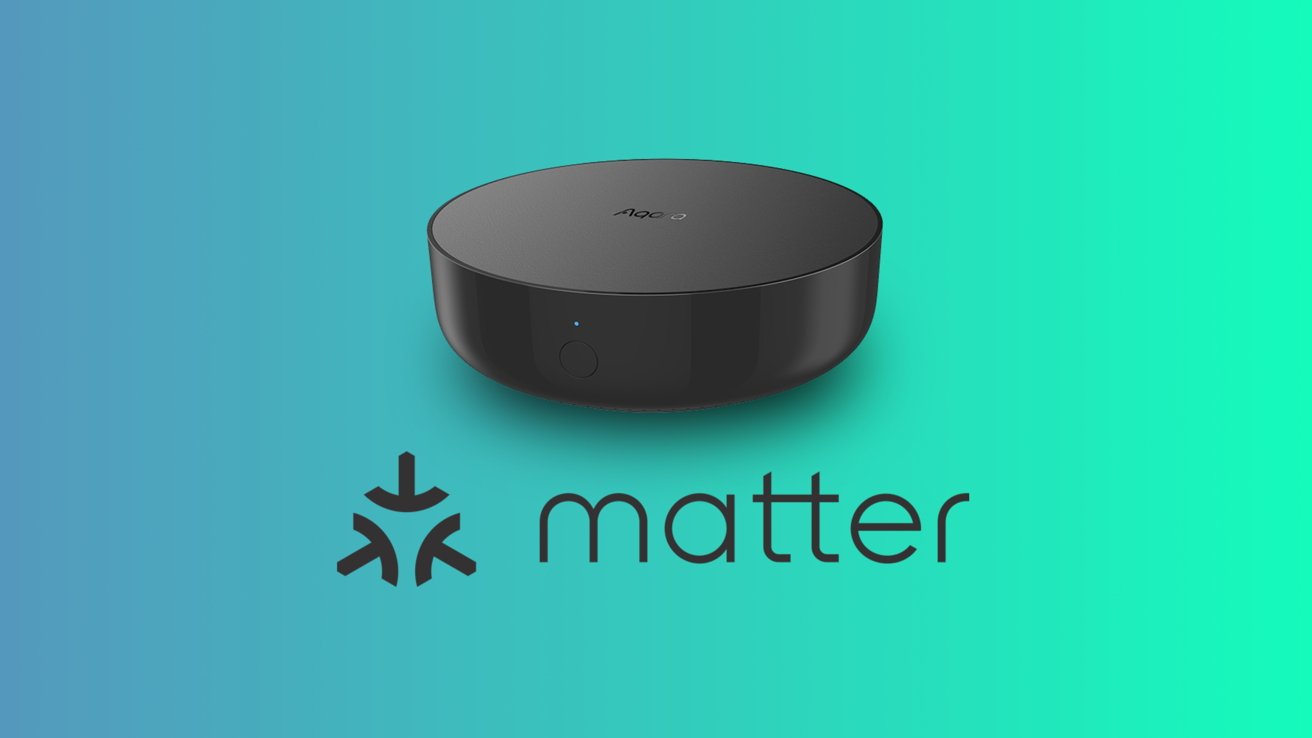Aqara begins rollout of Matter firmware for M2 hubs
Aqara has officially begun its rollout of new firmware for its M2 hub to enable Matter compatibility with more than 40 Zigbee accessories, though it won't be available to everyone initially.

Matter comes to Aqara's M2 hub
Starting today, users of Aqara's M2 hub can check within the self-titled app to see if their device has the optional 4.0.0 beta software available to install.
The update will roll out in gradual waves, taking roughly four to six weeks to complete. Aqara will initially target M2 hubs that were manufactured in 2022 and released outside of mainland China.
Aqara has put together a quick video demonstrating how to upgrade your hub and the various requirements. For Apple Home users, all your devices must be updated to 16.3 or later.
There are currently more than 40 Zigbee-based Aqara accessories that will work with Matter post-update including switches, sensors, smart plugs, radiator controllers, and more.
Following the launch of the 4.0.0 firmware for the Hub M2, Aqara will be releasing similar Matter-compatible updates to Hub M1S/M1S Gen 2, Hub E1, Camera Hub G3 and Camera Hub G2H Pro in the coming months.
You can pick up the Aqara M2 Hub on Amazon for $59.
Read on AppleInsider

Matter comes to Aqara's M2 hub
Starting today, users of Aqara's M2 hub can check within the self-titled app to see if their device has the optional 4.0.0 beta software available to install.
The update will roll out in gradual waves, taking roughly four to six weeks to complete. Aqara will initially target M2 hubs that were manufactured in 2022 and released outside of mainland China.
Aqara has put together a quick video demonstrating how to upgrade your hub and the various requirements. For Apple Home users, all your devices must be updated to 16.3 or later.
There are currently more than 40 Zigbee-based Aqara accessories that will work with Matter post-update including switches, sensors, smart plugs, radiator controllers, and more.
Following the launch of the 4.0.0 firmware for the Hub M2, Aqara will be releasing similar Matter-compatible updates to Hub M1S/M1S Gen 2, Hub E1, Camera Hub G3 and Camera Hub G2H Pro in the coming months.
You can pick up the Aqara M2 Hub on Amazon for $59.
Read on AppleInsider


Comments
LOL
Matter only works with Thread, Wi-Fi, and Ethernet and right now, there are VERY few Thead-enabled accessories on the market, especially sensors. There are no presence sensors with Thread, maybe one or two contact sensors, a single motion sensor, and not a lot else. Unless you plan on waiting a few years for devices to become available, you need to rely on ones that are Zigbee with a bridge as Bluetooth ones will never work with Matter.
I totally agree hubless is convenient but they can often be more expensive than their low-cost, hub-based counterparts and availability just isn't there yet for all the necessary devices for a good smart home. Maybe one day!
Matter is an overarching application level standard for device interoperability. It covers things like defining standard device types, device identity, lights, presence sensors, actuators like switches, and eventually - cameras. It supports interfaces to a set of independent communication standards including WiFi, Bluetooth, and Thread, but those standards also exist on their own and are not bound to Matter.
Thread, WiFi, Zigbee, Z-Wave, and Bluetooth LE are all independent connectivity standards that follow an Open System Interconnection (OSI) 7-layer model that includes everything from protocol, e.g., TCP/P, to physical layer implementations, including wire-level signaling and radio communication frequencies. Some of these are natively supported within the Matter standard, like Thread, WiFi, and Bluetooth, while others are not. Anything that is not natively supported, like Zigbee and Z-Wave, require a router/hub to allow devices on a non-native (from a Matter perspective) network to be seen in a Matter application.
Saying that a router/hub defeats the purpose of Matter is like saying that your WiFi access points on your home network defeat the purpose of your home network, which is inherently wired Ethernet if you’re connection is coming in through a cable of some sort. The simple fact is that Zigbee and Z-Wave are using totally different communication standards than WiFi or Thread, all the way down to the radios and radio frequencies used, so getting from one of those networks to a Matter supported network will require a router/hub just like going from wired Ethernet to WiFi requires a router/hub. (I hate using the word “hub,” but it’s unfortunately being misused by product makers.)
In my opinion, the biggest challenge for Matter adoption is HomeKit. HomeKit is also an application layer standard but a proprietary one. HomeKit was trying to do pretty much everything that Matter intended to do, like supporting Thread, but doing it in an Apple centric manner. Apple’s early Thread support in HomeKit only supported Apple devices. It’s still not clear to me whether Apple will consider its Home app to be a pure Matter client or a hybrid Matter + HomeKit client. The Matter standard hasn’t caught up to HomeKit for some devices, like cameras, so until Matter and HomeKit achieve functional parity I expect we’ll still see some disconnects between the two and HomeKit and the Home app acting as a superset on top of Matter. I just wish the Home app wasn’t so functionally underpowered.